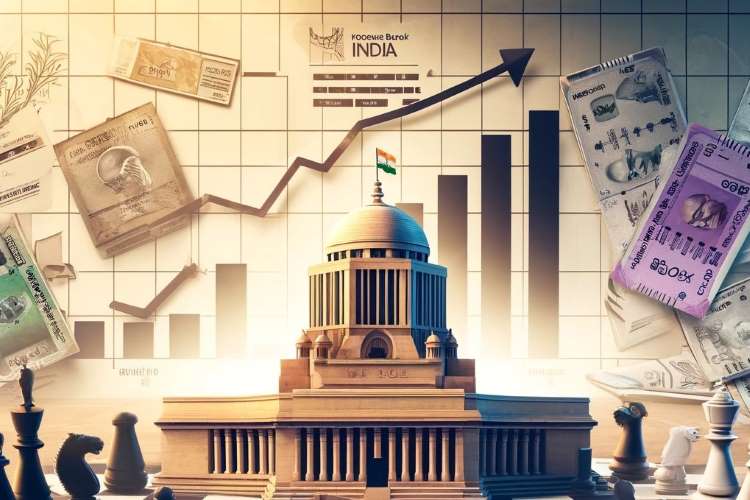
Despite continuous warnings from the Reserve Bank of India and the government regarding non-performing assets and risky lending practices, many private banks in India have experienced significant slippages into NPAs, largely due to unsecured loans. In their Q2FY25 earnings reports, major players such as Axis Bank, Kotak Mahindra Bank, and RBL Bank reported an increase in NPAs, primarily driven by risky loans, including credit cards, during the July-September period.
These banks have expressed caution about the health of their portfolios, highlighting the stress in the unsecured lending segment. Even digital lending platforms have seen rising NPAs, with only HDFC Bank managing to buck the trend and remaining unaffected.
READ | FTAs: India prepares blueprint for future free trade agreements
Slippages hit profits
Kotak Mahindra Bank has faced rising credit costs due to increased slippages in its unsecured portfolio, particularly in credit cards and microfinance loans. This has resulted in a 24% drop in net profit as provisions for bad loans surged. Similarly, RBL Bank saw a 24% decline in net profit due to the elevated stress in its credit card and microfinance portfolios.
Axis Bank’s Managing Director and CEO recently acknowledged the deterioration in asset quality, particularly in the unsecured loan segment. The bank reported gross slippages of ₹4,443 crore, the majority of which were in the unsecured lending space. The bank also wrote off ₹3,100 crore, primarily from its unsecured portfolio.
Banks, unsecured loans and NPAs
Following the corporate bad loan crisis of 2015, banks shifted their focus towards retail lending, particularly in personal loans, credit cards, and housing loans. This shift coincided with the rise of instant loan apps, leading consumers—especially younger, digitally savvy individuals—into taking on excessive debt, sometimes resulting in a debt trap. Today, retail loans have surpassed both industrial and service sector loans in terms of outstanding amounts.
Unsecured loans, which are not backed by collateral, have been attractive to banks due to higher interest rates, growing demand, and the rapid expansion of credit card usage. However, these loans come with higher risks, and when borrowers default, banks face a surge in NPAs, negatively impacting profitability.
Despite warnings from both the government and the RBI to avoid long-term, high-risk funding, many banks continue to face challenges. Fitch Ratings recently issued a caution to Indian banks, urging them to manage their lending practices carefully.
Steps taken to mitigate the crisis
Banks are gradually becoming aware of the risks associated with unsecured loans. Axis Bank, for instance, has taken early measures to address these issues, including tightening credit scores, reducing spending limits, and implementing other strategies that are starting to yield positive results. While there are early signs of improvement, the bank remains cautious about this particular portfolio.
RBL Bank has also faced internal challenges, with slippages in its credit card portfolio partly due to the transition of collection processes in-house. The bank hired new staff for collections after July, contributing to the increased slippages. In contrast, HDFC Bank, having anticipated the stress in the unsecured lending space, took action six to nine months before the RBI introduced new regulations, thereby avoiding significant losses.
Big Picture: Indian banks’ health
Despite these challenges, the overall health of Indian banks remains resilient. According to the Financial Stability Report (FSR) of June 2024, the banking sector has shown remarkable resilience, with sustained improvements in asset quality and high profitability across both public and private sector banks.
This year, the gross NPAs of the Indian banking system declined to a 12-year low. Sector-wise data indicate a drop in bad loans across agriculture, industry, services, and personal loans, though stress in the credit card segment has risen. Stress tests of banks’ balance sheets have also shown that they are well-positioned to absorb macroeconomic shocks, with bad loans expected to fall to 2.5% by March 2025 under normal business conditions.
Addressing risks in retail loans
However, amid these positive trends, the RBI has flagged the rising delinquency levels in personal loans, particularly in small-ticket loans below ₹50,000, where delinquency rates remain high. A previous analysis by Policy Circle highlighted that many borrowers hold multiple loans, raising concerns about overlapping debt obligations.
Fitch Ratings also pointed out a lack of transparency in Indian banks’ retail lending data, identifying this as a major risk factor. Compared to other Asian banking systems, Indian lenders provide less information on key indicators such as loan-to-value ratios, borrower debt serviceability, and credit bureau scores.
It wasn’t long ago that India faced a massive NPA crisis, with the share of bad loans reaching as high as 10% in 2017. The government and the RBI responded by deploying various debt recovery mechanisms, including the Insolvency and Bankruptcy Code (IBC) of 2016. These efforts helped banks recover from a severe bad loan problem. Given this recent history, the RBI and the government remain vigilant in monitoring banks’ financial health.
Now, the RBI is particularly concerned about rising delinquency levels in retail loans, especially among small borrowers. While the banking system appears stable overall, these issues could pose risks in the future. Slippages from retail loans currently account for a significant portion of new NPAs, with the potential for further deterioration if left unchecked.
The RBI has consistently warned lenders about the risks associated with unsecured loans. With signs of rising NPAs in the unsecured segment, it is now time for banks to heed these warnings and exercise greater caution in their lending practices. Addressing the issue proactively will be crucial for maintaining the long-term stability of the Indian banking system.
